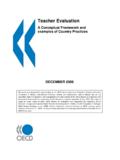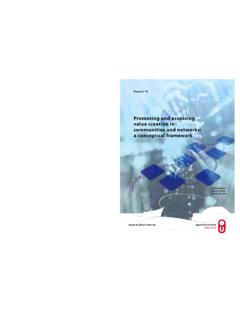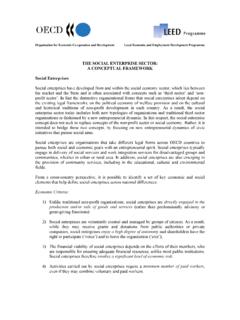Transcription of Childhood Stunting: Context, Causes and …
1 Childhood stunting : context , Causes and consequences WHO conceptual framework September 2013 Ref: Stewart CP, Iannotti L, Dewey KG, Michaelsen KF & Onyango AW. Contextualising complementary feeding in a broader framework for stunting prevention. Maternal and Child Nutrition 2013;9(Suppl 2):27-45. Agriculture and Food Systems Food production and processing Availability of micronutrient-rich foods Food safety and quality Inadequate practices Infrequent feeding Inadequate feeding during and after illness Thin food consistency Feeding insufficient quantities Non-responsive feeding Health and Healthcare Access to healthcare Qualified healthcare providers Availability of supplies Infrastructure Health care systems and policies Education Access to quality education Qualified teachers Qualified health educators Infrastructure (schools and training institutions)
2 Food and water safety Contaminated food and water Poor hygiene practices Unsafe storage and preparation of foods Concurrent problems & short-term consequences Long-term consequences Poor quality foods Poor micronutrient quality Low dietary diversity and intake of animal-source foods Anti-nutrient content Low energy content of complementary foods Water, Sanitation and Environment Water and sanitation infrastructure and services Population density Climate change Urbanization Natural and manmade disasters Political economy Food prices and trade policy Marketing regulations Political stability Poverty, income and wealth Financial services Employment and livelihoods Community and societal factors Inadequate Complementary Feeding Stunted Growth and Development Health Mortality Morbidities Developmental Cognitive, motor, and language development Economic Health expenditures Opportunity costs for care of sick child Economic Work capacity Work productivity Developmental School performance Learning capacity Unachieved potential Health Adult stature Obesity and associated co-morbidities Reproductive health Infection Clinical and subclinical infection Enteric infection.
3 Diarrhoeal disease, environmental enteropathy, helminths Respiratory infections Malaria Reduced appetite due to infection Inflammation Household and family factors Maternal factors Poor nutrition during pre-conception, pregnancy and lactation Short maternal stature Infection Adolescent pregnancy Mental health IUGR and preterm birth Short birth spacing Hypertension Inadequate practices Delayed initiation Non-exclusive breastfeeding Early cessation of breastfeeding context Causes consequences Society and Culture Beliefs and norms Social support networks Child caregivers (parental and non-parental) Women s status Home environment Inadequate child stimulation and activity Poor care practices Inadequate sanitation and water supply Food insecurity Inappropriate intra-household food allocation Low caregiver education Breastfeeding















